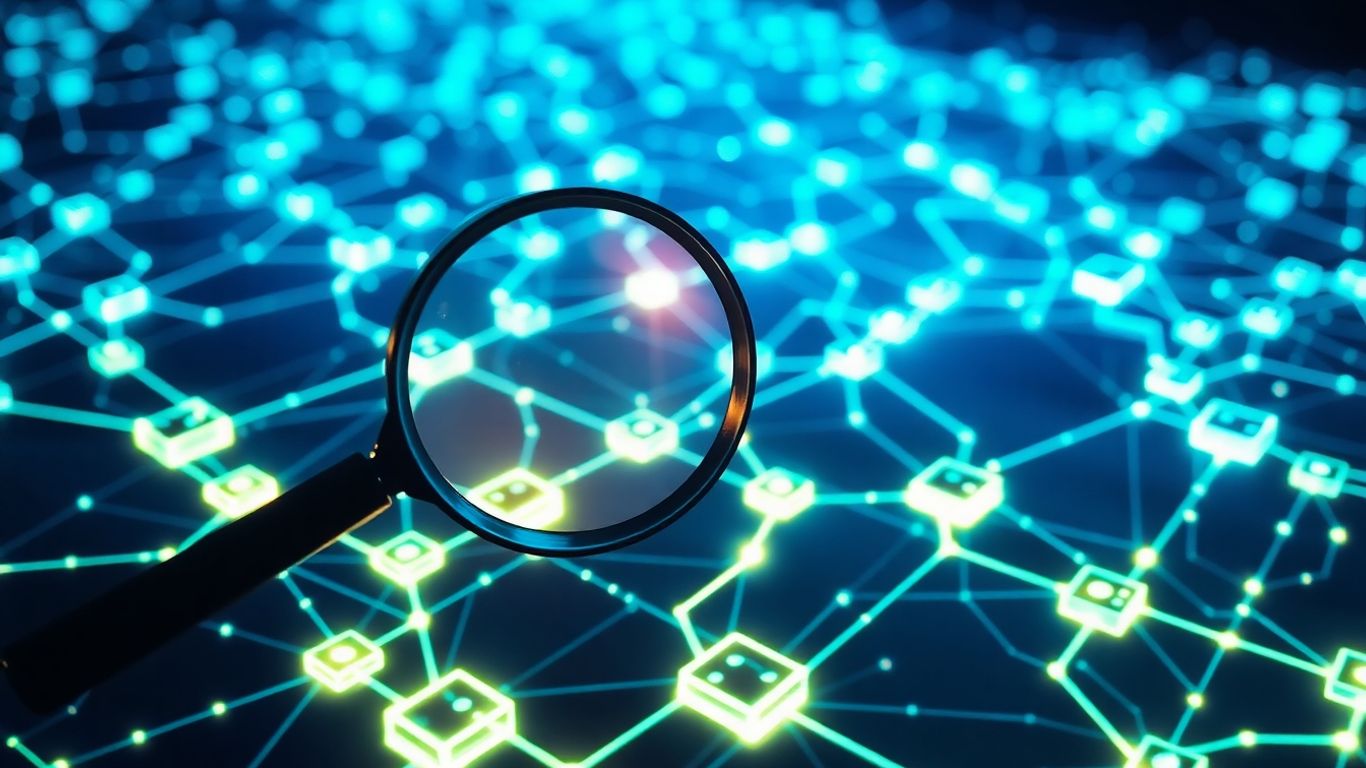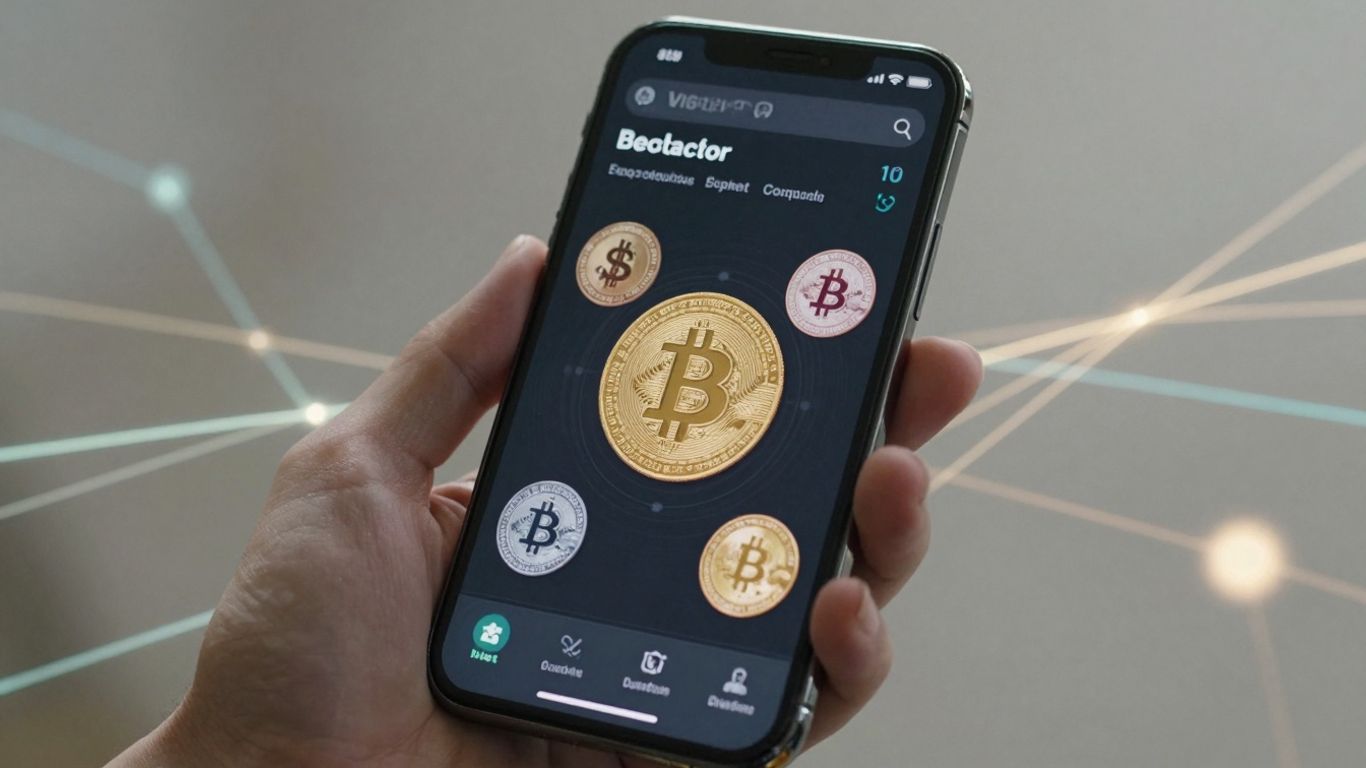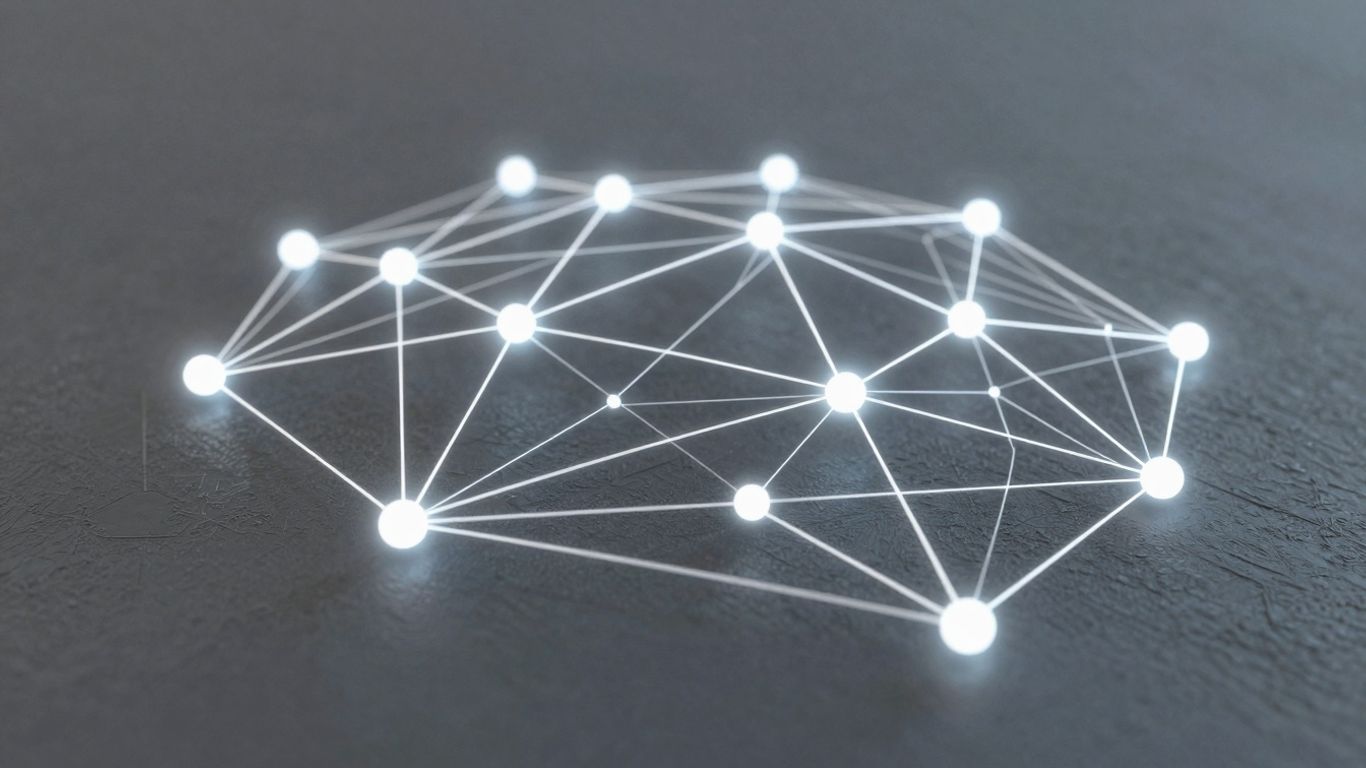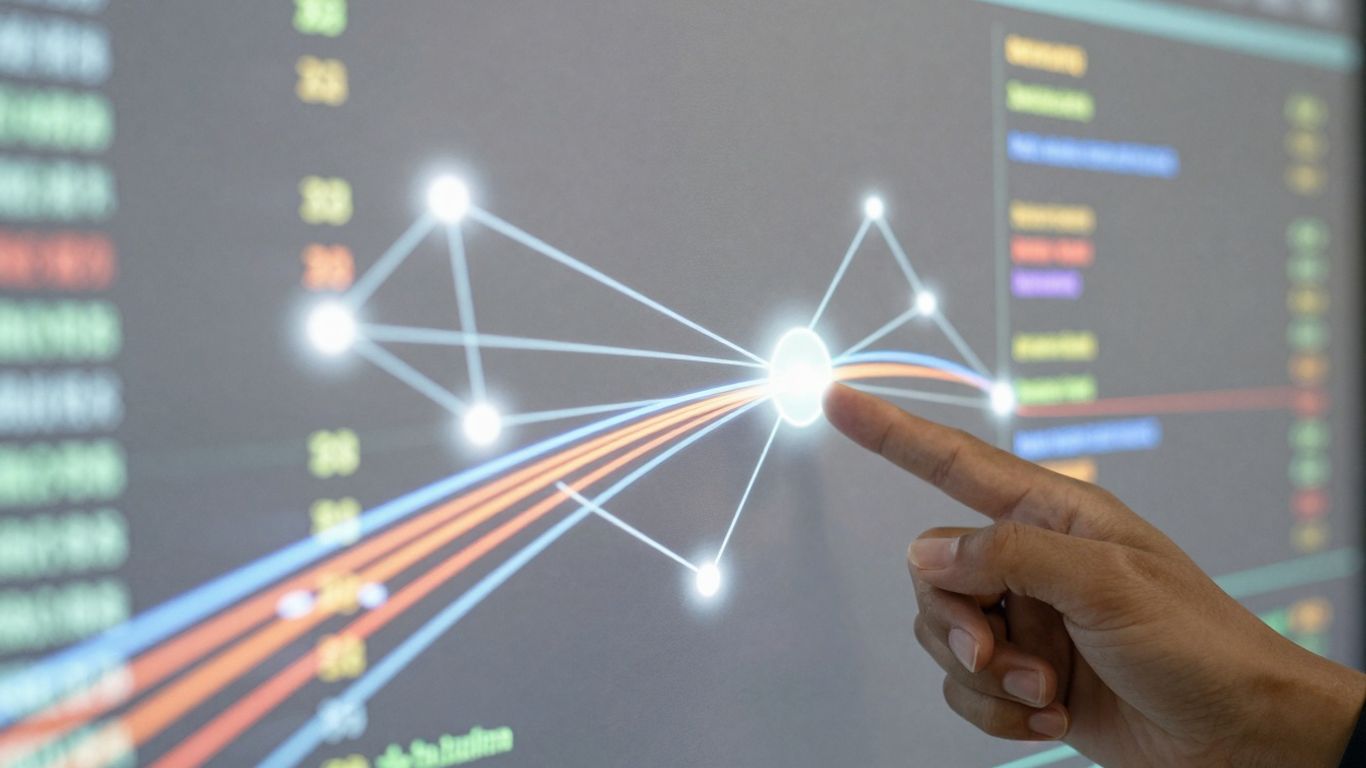[ newsletter ]
Stay ahead of Web3 threats—subscribe to our newsletter for the latest in blockchain security insights and updates.
Thank you! Your submission has been received!
Oops! Something went wrong. Please try again.
Explore advanced blockchain forensics tools for investigating illicit activities. Discover features for tracing funds, identifying threat actors, and building strong cases.





The digital world moves fast, and sometimes, that speed can be used for not-so-great things. Think about all the transactions happening on blockchains every second. While most are totally fine, a few can be linked to bad actors trying to pull off scams or worse. That's where a blockchain forensics tool comes in. It’s like a detective kit for the digital currency world, helping folks figure out where money is going and who's moving it, especially when things get shady. We're going to look at what these tools do and why they're becoming a big deal.
So, you've heard about blockchain, right? It's that fancy digital ledger technology that's supposed to be super secure. But what happens when things go wrong? That's where blockchain forensics tools come in. Think of them like digital detectives for the crypto world. They're designed to sift through all the transaction data on a blockchain to figure out what happened, especially when something shady is going on.
Basically, blockchain forensics is all about using specialized tools and methods to dig into blockchain data. This includes looking at transactions, wallet addresses, and all sorts of other on-chain information. The goal is to track down people or groups involved in illegal activities. It's become a really important part of fighting crime in the digital age, especially with how much decentralized finance (DeFi) has grown. Without these tools, it would be incredibly tough to follow the money when it's moving around on the blockchain. It's estimated that a huge number of agencies feel unprepared for crypto investigations, which really highlights the need for these forensic capabilities.
What makes a good blockchain forensics tool? Well, they need to be able to do a few key things. First off, they have to access and organize data from different blockchains. It's not just about one chain anymore; criminals hop between them. Then, there's transaction analysis. This is where the tool looks at individual transactions, tracing the flow of funds from start to finish. It's like following a digital breadcrumb trail.
Here are some of the main features you'd expect:
These tools are built to handle the pseudonymous nature of blockchain, using clever techniques to link different addresses together. It's not always straightforward, but these features are what allow investigators to piece together the puzzle.
Transaction analysis is really the heart of blockchain forensics. It's how investigators examine the details of each transaction – who sent what, to whom, and when. They look for patterns, unusual amounts, or connections to known illicit addresses. This detailed examination helps build a case by showing the movement of funds, which can be critical evidence in court. For instance, tracing funds across multiple blockchains is now possible, giving a more complete picture of illicit operations. This kind of detailed analysis is what helps distinguish legitimate activity from criminal endeavors, which is vital for regulatory compliance.
When it comes to tracking down shady dealings on the blockchain, analytics tools are pretty much our best friends. Think of it like this: every transaction leaves a digital breadcrumb, and these tools help us follow that trail. It's not always straightforward, though. Criminals get pretty creative, using all sorts of tricks to hide where the money is going.
One of the biggest headaches investigators face is when funds hop between different blockchains. Criminals often use what are called 'bridges' to move crypto from one network to another, making it look like the money just vanished. This is where advanced analytics really shine. They can track these movements, even when they cross over different blockchain ecosystems. It's like having a map that shows you not just one road, but all the connecting highways and backroads.
It's not just about the money; it's about who's moving it. Blockchain analytics can help us build profiles of these bad actors. By looking at the addresses they use, how they interact with other addresses, and the types of transactions they make, we can start to piece together who they are and who they work with. This is often done through something called 'address clustering,' where we group together addresses that seem to belong to the same person or group.
The pseudonymous nature of blockchain means we don't always see real names, but by analyzing transaction patterns and connections, we can often link clusters of addresses to a single entity, revealing a network of illicit activity.
Ultimately, all this tracking and analysis is about stopping financial crimes. Whether it's money laundering, funding terrorism, or running scams, the data is there on the blockchain. Tools that can sift through this data, identify suspicious patterns, and flag risky transactions are vital. The ability to connect on-chain activity to real-world entities, even if indirectly, is what makes blockchain forensics so powerful in the fight against crime. It helps law enforcement agencies build cases and recover stolen assets, making the digital world a safer place.
Here's a look at some common illicit activities and how analytics help:

Modern blockchain forensics tools go way beyond just tracking simple coin movements. They've developed some pretty sophisticated features to help investigators really dig into complex crypto activities. It's not just about seeing where money went; it's about understanding who was involved and how they operated.
One of the trickiest parts of blockchain investigations is figuring out if multiple addresses belong to the same person or group. This is where address clustering comes in. Think of it like putting together puzzle pieces. By analyzing transaction patterns, shared inputs/outputs, and other on-chain behaviors, these tools can group together addresses that are likely controlled by a single entity. This helps investigators build a clearer picture of a suspect's total holdings and activities, even if they're trying to spread things out across different wallets. It's a big step up from just looking at individual transactions.
Beyond just tracking funds, advanced software can now identify patterns of behavior associated with known criminal activities. This means the tools are trained to spot things like:
By recognizing these typologies, investigators can more quickly flag suspicious activity and focus their efforts on the most likely criminal operations. It's like having a digital informant who knows all the bad guys' tricks.
For ongoing investigations or proactive monitoring, real-time alerts are a game-changer. These systems can be configured to notify investigators immediately when certain conditions are met. This could include:
This immediate notification allows law enforcement and compliance teams to react much faster, potentially freezing assets before they can be moved or laundered. It's about getting ahead of the criminals, not just catching up later. The ability to get these alerts can be critical for asset recovery, as seen in successful operations that freeze illicit assets.
The sophistication of these tools means that investigators are no longer just looking at a ledger; they're analyzing complex networks and behaviors. This shift is vital as criminals constantly adapt their methods to exploit new technologies and evade traditional oversight.
The world of cryptocurrency crime isn't static; it's always changing, kind of like how I keep trying to organize my garage but it just gets messier. Criminals are getting smarter, finding new ways to operate and hide their tracks. It's a constant game of cat and mouse, and staying ahead requires some serious detective work.
Criminal groups are really good at adapting. When law enforcement cracks down on one method, they just shift to another. We're seeing them move away from older, more obvious platforms and embrace newer, more decentralized ones. This makes them harder to track because there's no single point of control to target. They're also getting better at using technology to their advantage, like cross-chain bridges and even AI, to make their activities harder to spot.
The speed at which these illicit networks change their methods is pretty wild. One minute they're using one technique, and the next, they've adopted something entirely new to stay one step ahead of investigators.
Decentralized Finance, or DeFi, is a hot area right now, and unfortunately, criminals are paying attention. Because DeFi operates without central authorities, it can be a bit of a wild west. This creates new opportunities for scams, hacks, and money laundering. Things like flash loans and complex smart contract exploits are becoming more common, allowing criminals to make off with huge sums of money very quickly.
Here are some of the newer threats popping up in DeFi:
When crime crosses borders, it gets complicated fast. With crypto, transactions can happen anywhere in the world in seconds. This means law enforcement agencies in different countries need to work together, but that's not always easy. Different laws, different levels of technical know-how, and the sheer speed of transactions make it incredibly difficult to freeze stolen funds or catch the people responsible. Coordinating international efforts is key, but it's a massive undertaking.
Law enforcement agencies are increasingly finding that blockchain intelligence tools are not just helpful, but necessary. These tools let investigators see what's happening on the blockchain, making it easier to track down criminals. It's like having a super-powered magnifying glass for digital money.
When law enforcement teams up with private companies that specialize in blockchain analysis, good things happen. These partnerships bring together different skills and data. For example, the T3 Financial Crime Unit, a collaboration between TRON, Tether, and TRM Labs, has frozen over $250 million in illicit assets. This kind of teamwork helps speed up investigations and recover stolen funds.
Here's a look at how these partnerships work:
The speed at which illicit funds can move across blockchains presents a major challenge. Traditional methods of investigation can be too slow. However, by combining real-time data analysis with the ability to freeze assets quickly, these public-private efforts are making a real difference.
Using blockchain data isn't just about finding criminals; it's about stopping their operations before they can do more harm. By mapping out how money moves, investigators can identify key players, understand their networks, and find weaknesses. This data-driven approach allows for more targeted actions, like freezing assets or shutting down operations.
Consider how drug precursor manufacturers have adapted. They've become more cautious about sharing crypto addresses directly because they know blockchain analysis can trace those transactions. This shows that the very act of investigating and making the process transparent acts as a deterrent.
Ultimately, blockchain forensics brings a new level of accountability to the digital world. Because transactions are recorded on an immutable ledger, it's much harder for criminals to hide their tracks. This transparency means that actions can be traced back, and those involved can be held responsible.
This increased accountability helps build trust in the digital economy and makes the blockchain space safer for everyone involved.

Building a solid case with blockchain forensics isn't just about finding transactions; it's about weaving a clear narrative of illicit activity. A good tool helps you connect the dots, turning raw data into compelling evidence. Think of it like piecing together a puzzle, where each transaction is a small but vital clue.
Seeing how money moves is key. Blockchain forensics tools can map out complex transaction paths, making it easier to follow funds from their origin to their destination. This visual representation is incredibly helpful when explaining intricate financial movements to others, like judges or juries.
This visualization helps investigators understand the scope of the operation and present it in a way that's easy to grasp. It moves beyond just numbers on a screen to a story of financial activity.
While blockchain data is powerful, it's often just one piece of the puzzle. The real strength comes when you combine on-chain information with off-chain intelligence. This means linking wallet addresses to real-world entities, social media activity, or other investigative findings.
By bringing these different types of data together, you create a much richer picture of the individuals or groups involved. It’s about building a complete profile, not just a list of transactions. This integrated approach is vital for building strong evidence in complex cases.
Let's be honest, blockchain investigations can get complicated fast. With thousands of transactions and multiple wallets, it's easy to get lost. A good forensics tool acts as your guide, simplifying these complex scenarios.
Advanced tools can automate many of the tedious tasks, like address clustering and pattern recognition. This frees up investigators to focus on the strategic aspects of the case, like developing theories and identifying key suspects.
These tools help by:
Ultimately, using these tools effectively means you can build a more robust case, faster and with greater confidence.
So, we've gone over how these blockchain forensics tools work and why they're becoming super important. It's pretty clear that as more people use crypto, the bad guys are going to keep finding new ways to cause trouble. But the good news is, the tools to track them are getting better too. Things like tracing transactions, spotting weird patterns, and even using AI are making it a lot harder for criminals to get away with things. It's a constant game of cat and mouse, but having these investigative tools really helps level the playing field for law enforcement and keeps the whole crypto world a bit safer for everyone else.
Think of blockchain forensics like being a digital detective. It's all about using special tools to look at the records on a blockchain, like who sent what to whom. This helps us find out if anyone is doing anything illegal with cryptocurrencies, like stealing or money laundering.
Because bad guys are getting smarter! They use crypto for all sorts of crimes, from scams to funding illegal stuff. These tools help us follow the digital money trail, even when criminals try to hide it, so we can catch them and stop them.
Yes, that's one of the really cool things these tools can do. Criminals sometimes hop between different types of cryptocurrencies or blockchains to make it harder to follow them. Advanced tools can trace these movements across various chains, like following a river through different streams.
These tools can group together different digital addresses that seem to belong to the same person or group. By looking at all their activity, even across many addresses, investigators can start to build a picture of who they are and what they're up to.
Mostly, yes, they are used by law enforcement and government agencies to fight crime. But some companies also offer similar services to help individuals who might have lost money to scams or theft, or to help businesses stay safe.
By finding and stopping criminals, these tools make the whole system more trustworthy. When people know that illegal activities can be tracked and punished, they feel safer using cryptocurrencies and blockchain technology for good things.


